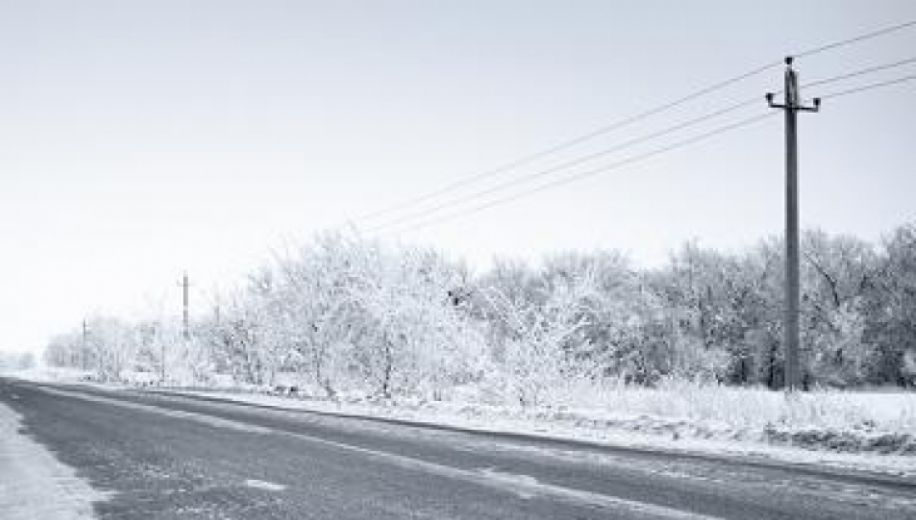Being aware of the road conditions is vital to staying safe in your car, so always check the weather reports to get the latest information on the likelihood of ice, hail or snow. If the winter road conditions are particularly bad, it's important to limit your travel to essential journeys only, while sticking to main roads that have been gritted.
To help you navigate ice and hail, we've put together an in-depth guide to driving safely in on icy roads, so you can travel with confidence when the weather takes a turn for the worse.
How to prepare for driving on ice
- Firstly, think about whether your journey is really necessary.
- Tyre grip is hugely reduced on icy roads, and braking distances are much longer.
- Even if you avoid an accident, your car may get stuck – potentially leading to a long walk home. Traffic congestion is likely to be worse, too. If you don’t get stuck, the driver in front of you probably will.
- Before you leave home, make sure you pack a charged mobile phone (and a charger cable), a bottle of water, a few snacks and a warm blanket. If snowfall looks likely, a set of snow socks – high-grip fabric covers fitted over the car’s driven wheels – is worth having, too.
- If you’re driving to meet someone, let them know your route and when you expect to arrive. Make sure the car’s windows and mirrors are completely clear before you set off. And in cars with selectable drive modes, select the best option for cold conditions.
How to drive on icy roads
- Anticipation and smoothness are key for driving on icy roads.
- Look well ahead for potential hazards – including, of course, patches of ice – and keep your speed well down.
- Accelerate, brake, steer and change gear as smoothly as possible to reduce the risk of a skid.
- A higher gear may be more appropriate to aid grip on packed ice.
- This helps manage engine power delivery, making it easier to find traction. If it’s a manual, you might need to slip the clutch a little to prevent the car from stalling.
- Many automatics will let you select second gear at a standstill to pull away in.
What is the braking distance on ice?
Braking distances can increase tenfold on ice compared with a dry road.
For this reason, you should leave up to 10 times the normal recommended gap between you and the car in front.
Remember that tyres grip less efficiently in cold conditions.
So even if the temperature is above zero and there’s no ice on the road, you should take extra care.
Winter tyres offer more grip and can significantly increase performance in icy conditions.

SALE – up to 40% off*
Roadside & Recovery from £5.29 a month*
• Cheaper than AA Price Guarantee^
• We get to most breakdowns in 60 mins or less
• Our patrols fix 4/5 breakdowns on the spot
*Max 40% applies to new Complete cover for 1 vehicle. Ends 30/01, 4pm. At least 10% of new customers pay this for single-vehicle Roadside & Recovery (Extra). ^Find the same cover cheaper on theaa.com within 7 days & we'll beat it by 10%. T&Cs here.

What is black ice?
Black ice is a thin layer of ice on the road surface.
Because it is smooth and transparent, it appears the same colour as the road below.
Black ice can be almost invisible to drivers, which makes it particularly dangerous.
As a guide, if the temperature is low and the road surface looks ‘wet’, be careful and drive with caution as it could be black ice.
How to identify and drive on black ice
Sometimes black ice appears as a glossy sheen on the road.
You may see it glinting in the sunlight, or spot cars ahead swerving for no obvious reason.
However, it’s likely you won’t see black ice at all, so be particularly cautious on shaded stretches of road, bridges, flyovers and tunnels – anywhere the surface temperature may be lower, in fact.
Quiet roads are also more likely to be affected.
If you hit a patch of black ice, don’t panic.
Keep the steering wheel straight and maintain your speed – don’t hit the brakes.
Use the gears to slow down if necessary, but avoid any sudden movements that could destabilise the car.
How to correct a skid on ice
If you do encounter a skid, steer gently into it.
For example, if the rear of the car is sliding to the right, steer to the right.
As above, do not take your hands off the steering wheel or brake hard.
How to drive in hail
Hail storms are extremely dangerous to drive in. Not only can they cause extensive damage to your car but can also be harmful to anyone who decides to venture out of their vehicle.
Hail can also impair visibility and even break your car’s windows in extreme conditions. If hail is severe, stop driving and pull over to a safe – preferably sheltered – place.
If you have to travel, plan your route to avoid known affected areas.
We also recommend informing relatives and friends of your intended route in case of an emergency.
The following tips should always be followed when driving in hail storms:
- Stay inside the vehicle. Hail falls at fast speeds, and can cause injury
- If hail is severe, stop driving and pull over to a safe place so the hail doesn't break the windshield or any windows. Stop under an overpass if you can, or pull out of traffic lanes and on to a hardshoulder
- Keep your car angled so that the hail is hitting the front of your car. Windshields are reinforced to withstand forward driving and pelting objects. Side windows and backglass are not and are much more susceptible to breakage
- Avoid ditches due to possible high-rising water
If you're looking for complete peace of mind this winter, then make sure you have RAC breakdown cover, van breakdown cover or business breakdown cover today.
Get 30 driving tips that will save you money
Running a car isn’t cheap, but there are some easy things you can do to keep your costs down. Get these tips and more useful driving articles sent straight to your inbox now.


Services we offer
- Breakdown Cover
- European Breakdown Cover
- Motorbike Breakdown Cover
- Electric Car Breakdown Cover
- Caravan, Motorhome and Campervan Breakdown Cover
- Business Breakdown Cover
- Van Breakdown Cover
- RAC Approved Garages
- Vehicle servicing
- Vehicle repair
- MOTs
- Mobile mechanics
- RAC Tyres
- RAC Approved Dealers
- RAC Shop
- myRAC app















